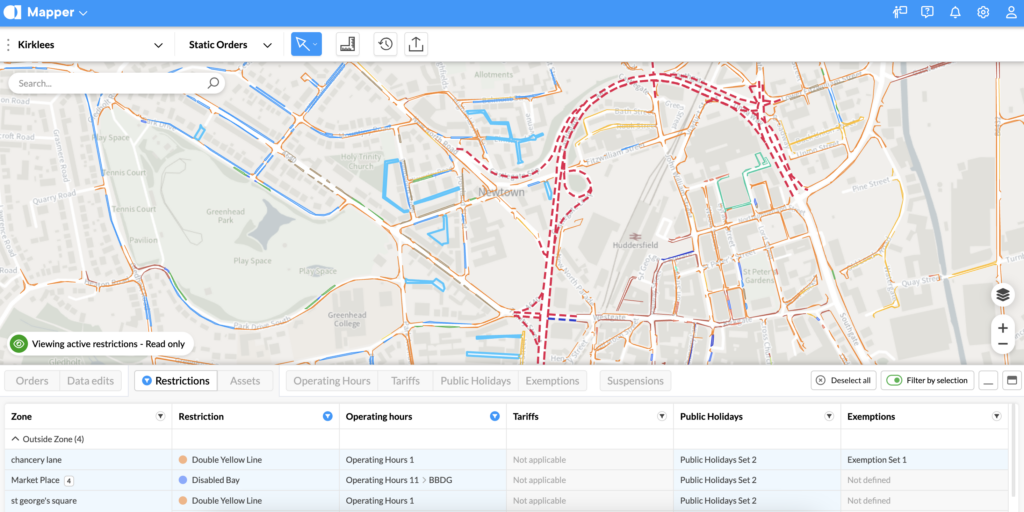As a Local Authority employee, you’re likely aware of the looming deadline for implementing Digital Traffic Regulation Orders (D-TROs) in the UK. With the Autumn 2025 deadline for new orders fast approaching, and existing TROs to follow soon after, it’s crucial to start preparing now.
Implementing Digital TROs might seem daunting, but with the right approach, it can be surprisingly straightforward. At AppyWay, we’ve guided numerous clients through this process, and we’ve found that the key to a smooth transition is understanding the full list of steps involved.
Tip: If you want to be ready for the D-TRO change in your local authority, don’t worry – we’ve got you.
We have published a free, easy to read Guide which you can download here: FREE DTRO Guide
”I urge other councils to embrace this transition rather than wait for a government mandate or deadline. It can be tempting to delay, particularly in light of the upcoming election, but early adoption has offered Lambeth immediate advantages.
David EagleshamHead of Service Development & Street Management at Lambeth Council
First of All: Understand the Regulatory Framework
Before beginning implementation, it’s crucial to understand the regulatory landscape:
- Current Legislation: Familiarise yourself with the Traffic Management Act 2004 and any recent updates governing TROs.
- Digital TRO Standards: Review the standards and guidelines for D-TROs provided by the Department for Transport (DfT) and the Ordnance Survey.
The shift to D-TROs brings several changes to the current TRO process, including standardised data formats, improved accessibility, and enhanced integration capabilities with other systems.
If you’re not fully familiar with what the D-TRO may mean for your Local Authority – don’t worry! Very soon we’ll be releasing a free, comprehensive guide with all the practical information you need to know. Stay tuned! For now, have a look at this short info here.
Step-by-Step Implementation Guide

A D-TRO real-life example: Kirklees kerbside data as seen in AppyWay’s Traffic Suite
Ready to make things happen? Here’s a quick overview of what’s needed to implement a D-TRO:
Step 1: Assessment and Planning
- Identify your specific needs and pain points in your current TRO processes.
- Evaluate your existing system to determine what data and processes need migration.
- Engage with all relevant stakeholders, including traffic management teams, IT departments, and legal teams.
- Clearly define your goals and objectives for the D-TRO transition.
Step 2: Data Preparation
- Collect all existing TROs from various sources (text documents, databases, etc.).
- Ensure data accuracy and completeness.
- Convert collected data into a standard format compatible with your chosen D-TRO system.
- Remove duplicate, outdated, or incorrect information (data consolidation).
Step 3: System Integration
- Map existing data to the new system.
- Conduct a test migration with a copy of your data before going live.
- Integrate the D-TRO system with other existing systems (GIS, CRM, enforcement systems, etc.) using APIs and interfaces.
AppyWay’s Traffic Suite solution offers seamless integration capabilities, particularly with enforcement systems. For example, their integration with TES has proven highly effective for local authorities like Lambeth Council. 👇
Step 4: Training and Support
- Provide comprehensive training for all users, including administrative staff, traffic engineers, and enforcement officers.
- Establish a robust support system for ongoing assistance and troubleshooting.
- Make use of online tutorials and FAQs to promote self-service training.
Step 5: Implementation and Monitoring
- Roll out the new system in phases, starting with a small area or specific TRO type.
- Collect user feedback during each phase to address issues promptly.
- Establish key performance indicators (KPIs) to monitor the system’s effectiveness.
- Conduct regular reviews to assess performance and make necessary improvements.
It’s worth noting that while the migration process may seem time-consuming, it doesn’t have to be. AppyWay has successfully migrated customers from legacy systems to their Traffic Suite in as little as 10 weeks, including the transfer of historic orders, user training, and system launch.
Questions, uncertainties?
If you’d like to ask any questions about the implementation of D-TRO in your local authority, get in touch here.
Data Management and Security
As you implement your D-TRO system, pay close attention to data management and security. Ensure compliance with data protection laws, especially GDPR – and implement robust cybersecurity measures to protect your D-TRO system from unauthorised access and data breaches.
Best Practices and Success Stories
Learning from others’ experiences can be invaluable. Have a look at these success stories:







